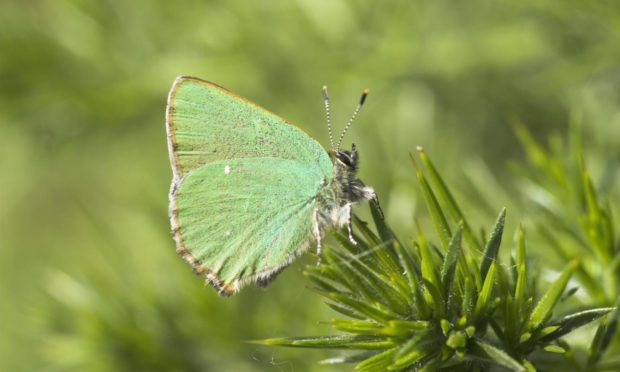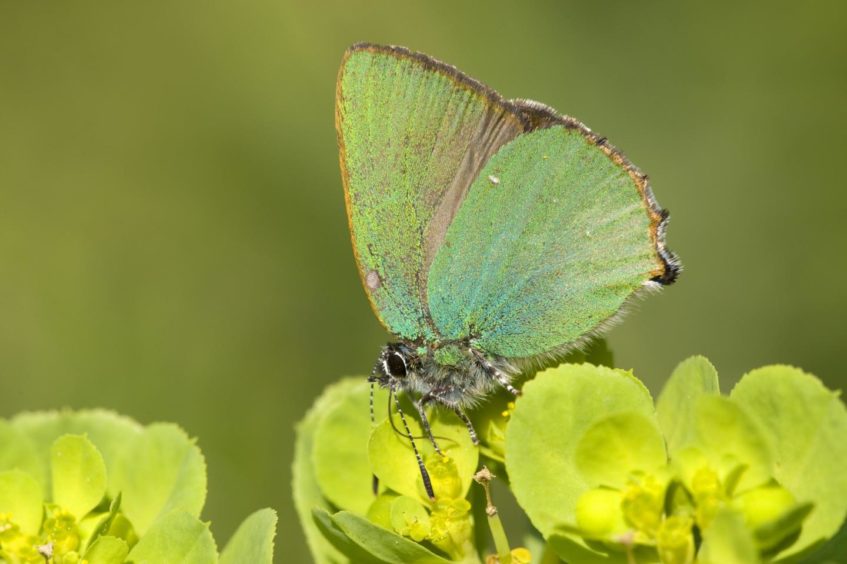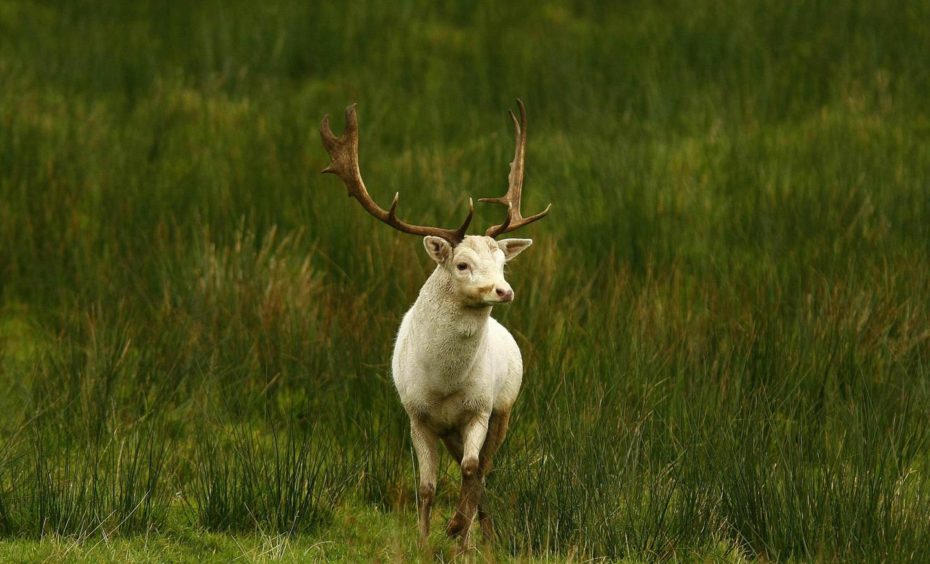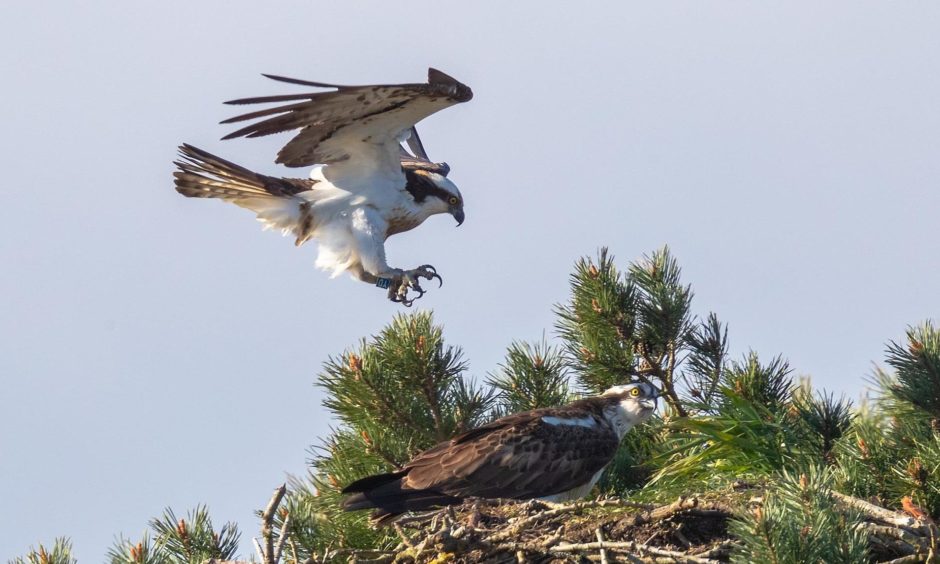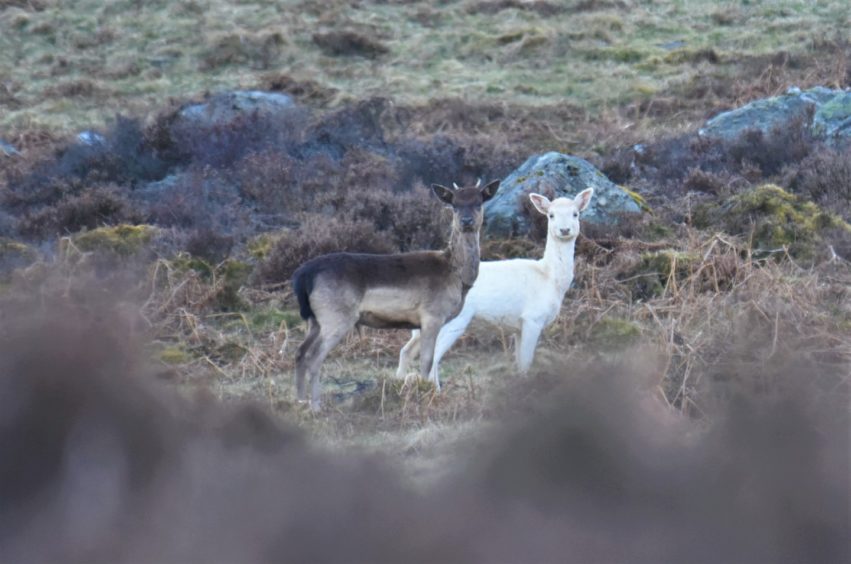There was a fluttering by the track edge that was so small and insignificant, it barely registered upon my mind.
Curiosity got the better of me, so I scrambled down a small incline to investigate this movement.
Up into the air flitted a little moth-like creature, before swiftly alighting on a grass stem, closing its wings to reveal the most stunning emerald-green colour imaginable.
It was a green hairstreak butterfly, a scarce species that is always a joy to find.
This was the first time I had spotted one in this patchwork of moor and forest above Dunkeld, and I was thrilled by the discovery.
Green hairstreaks are easy to overlook because of their diminutive size, but the brightness of the green underwings is so striking, that once seen, it remains indelibly imprinted upon the mind.
In some ways this is a butterfly in reverse because the upper sides of the wings are brown and unremarkable, and it is only the underparts that are so eye-catching.
Compared to many other Scottish butterflies, green hairstreaks have a short flight period, only being on the wing from late April until early June.
They are fussy in their habitat requirements, preferring sunny sheltered sites in open birch woodland, forest clearings and moorland, where blaeberry is found – the food plant of their caterpillars.
I adore this mix of forest, hill, moorland and lochan that stretches from Dunkeld in the south to Kirkmichael in the north, for it is a diverse environment that is home to so much wildlife.
Shortly after spotting the green hairstreak, a male stonechat flitted up into the air ahead of me, his orange-sparkled breast catching the evening spring sun.
Stonechats are charming little birds, forever surveying the world from prominent perches, and uttering their distinctive grating ‘tchak, tchak’ calls.
On my approach to Loch Ordie, an osprey on wide but slender wings swooped low overhead, calling a musical ‘pew, pew, pew’.
To me, the call of an osprey has a similar tone and resonance to that of a green woodpecker. This bird was heading southwards, probably towards the nearby Rotmell and Dowally Lochs in its quest for trout.
On reaching Loch Ordie, a lone goldeneye duck bobbed out on the water, continually roll-diving to feast on invertebrates lurking on the bottom below.
On my return journey towards the lochan called Mill Dam, I spotted a group of fallow deer grazing on a section of open hill.
One deer shone out like a beacon, for its coat was a startling creamy-white.
I have been a regular visitor to this part of Perthshire for over 30 years and during that time I have often seen white fallows here.
They are not albinos, but instead this a natural coat anomaly some individuals have. Fallows in general show much colour range, some being dark and others fawn.
This little group of deer bounded up to a hill crest, where the white individual with its resplendent snowy coat glowed and shimmered like a silver ghost illuminated under the low evening sun.
Info
Fallow deer are common in the area between Dunkeld and Kirkmichael. A native of the Mediterranean, fallows were first introduced into Britain in the 11th century for hunting purposes.
